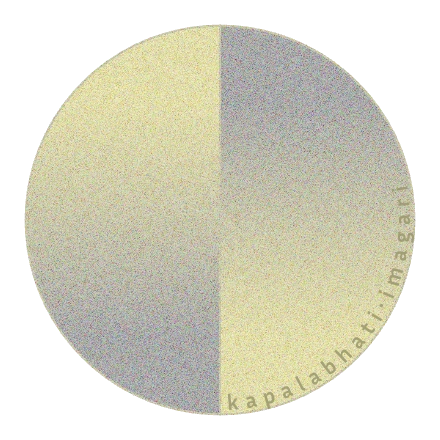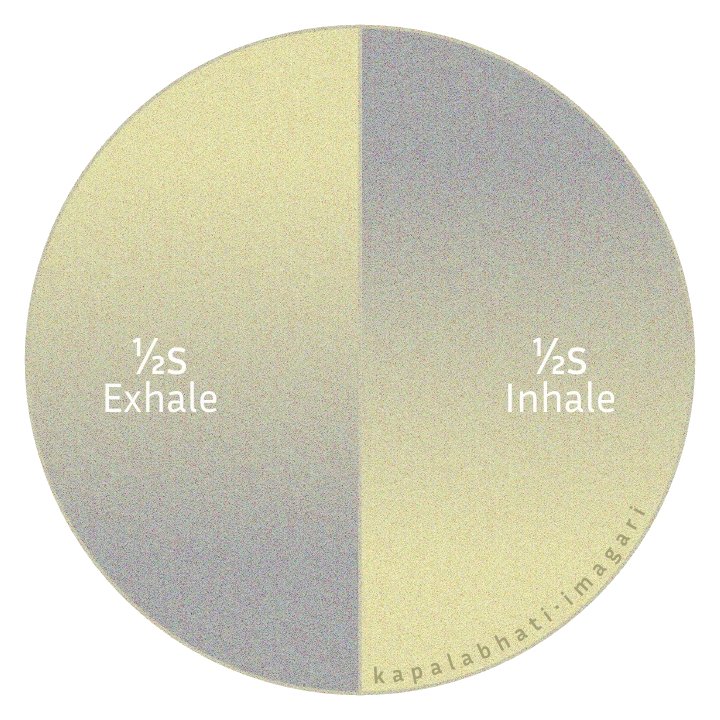Kapalabhati

Overview
Section titled “Overview”Kapalabhati, often translated as Shining Skull Breath, is a traditional yogic breath technique known for its cleansing, energizing effects. It consists of short, forceful exhales and passive inhales, generated by rhythmic contractions of the lower belly.
Though it resembles Breath of Fire, Kapalabhati is traditionally classified as a kriya—a cleansing technique—rather than just a pranayama. It’s used to clear the mind, stimulate digestion, and invigorate pranic energy throughout the body.
Inhale deeply once to begin and then
| Phase-by-phase | Time | How |
|---|---|---|
| Exhale | ¼ - ½s | Strongly through the mouth |
| Inhale | ¼ - ½s | Naturally |
Practice in rounds of 30–60 breaths, followed by a pause and deep breath
Start slow and increase pace only with comfort and control.
Effects & Benefits
Section titled “Effects & Benefits”- Cleanses the lungs and sinuses
- Stimulates the digestive and metabolic systems
- Increases mental clarity and alertness
- Warms the body and enhances circulation
- Activates the solar plexus and awakens energy in the body
- Supports detoxification and removal of stagnation
- Many practitioners describe a clear, uplifted feeling afterward—hence the name Shining Skull.
Getting Started
Section titled “Getting Started”Sit upright in a comfortable, alert posture. Inhale deeply through the nose.
- -Exhale ½sForcefully through the nose with your belly muscles pushing the air out
- -Inhale ½sLet the inhales be reflexive
- -Repeat30–60 times

imagari.me/kapalabhati
Inhale deeply, exhale fully, and rest in stillness. Start with 1–2 rounds, building to 3 rounds as your capacity increases. This breath is strong but controlled, not frantic or noisy.
When to Use
Section titled “When to Use”- First thing in the morning for a wake-up ritual
- Before meditation or yoga to clear mental fog
- When feeling sluggish, heavy, or mentally scattered
- To stimulate the digestive fire (agni) after overeating or lethargy
- During cold weather to warm and energize the body
Always practice on an empty stomach and stop if you feel dizzy or strained.